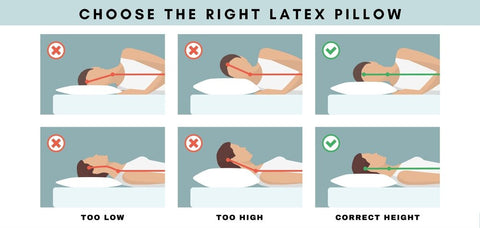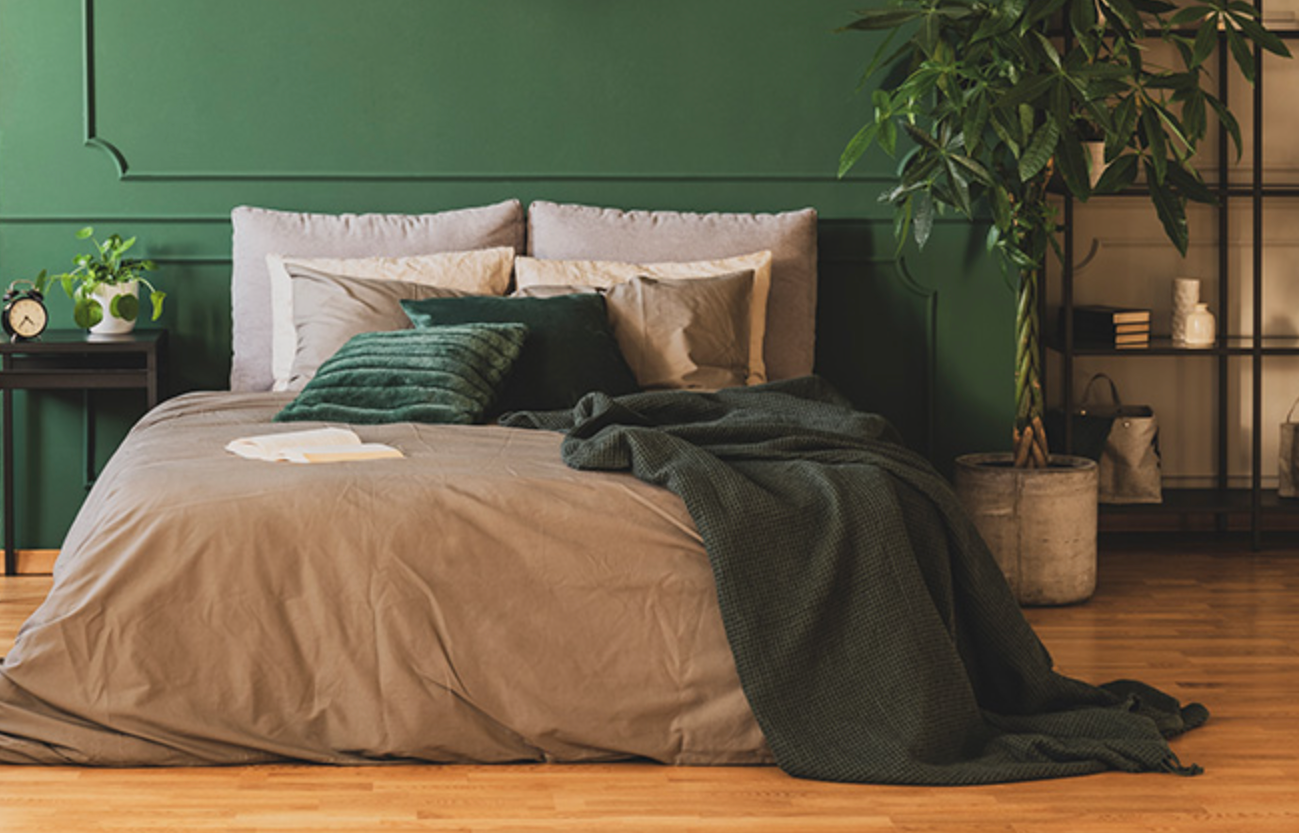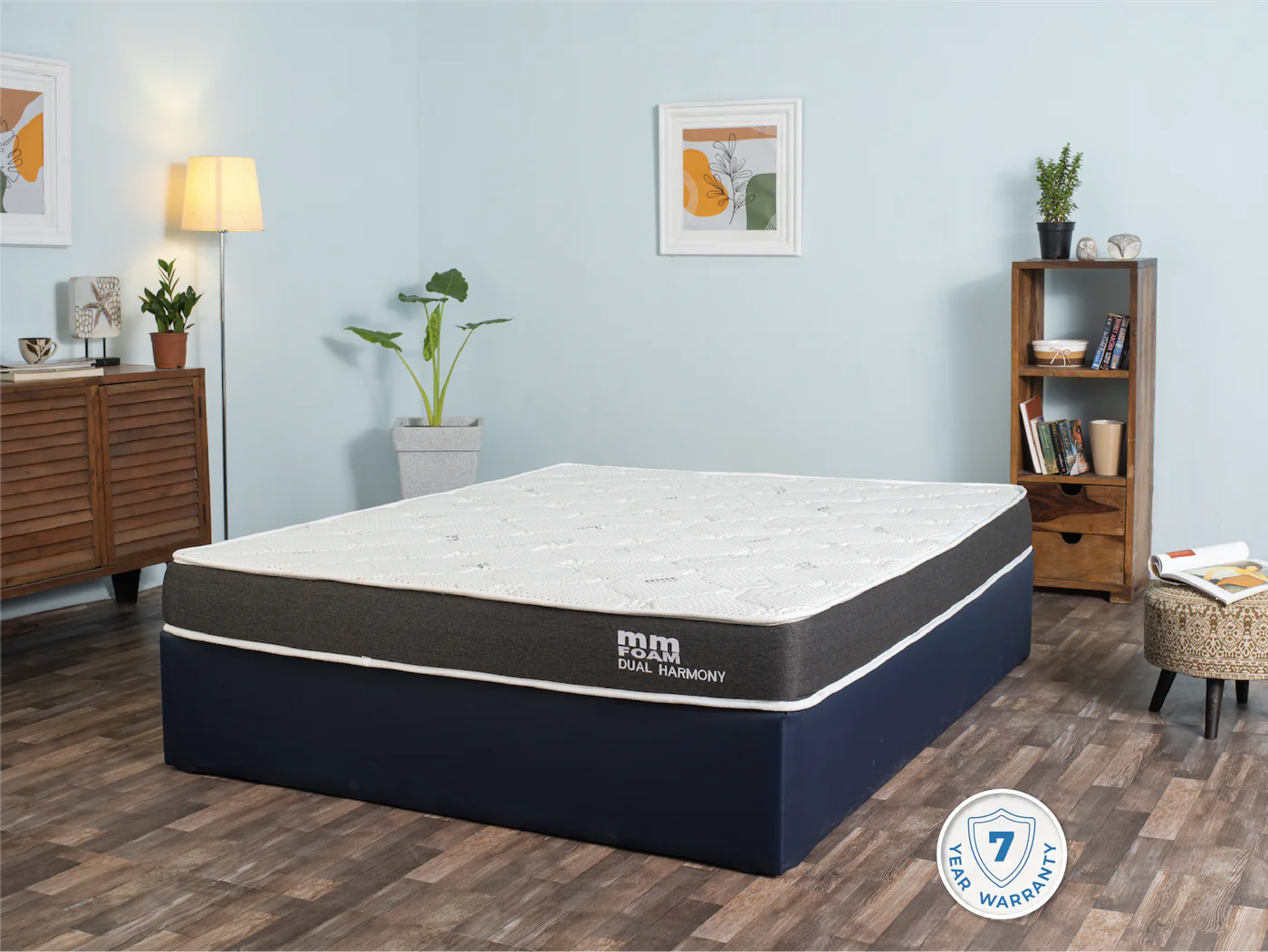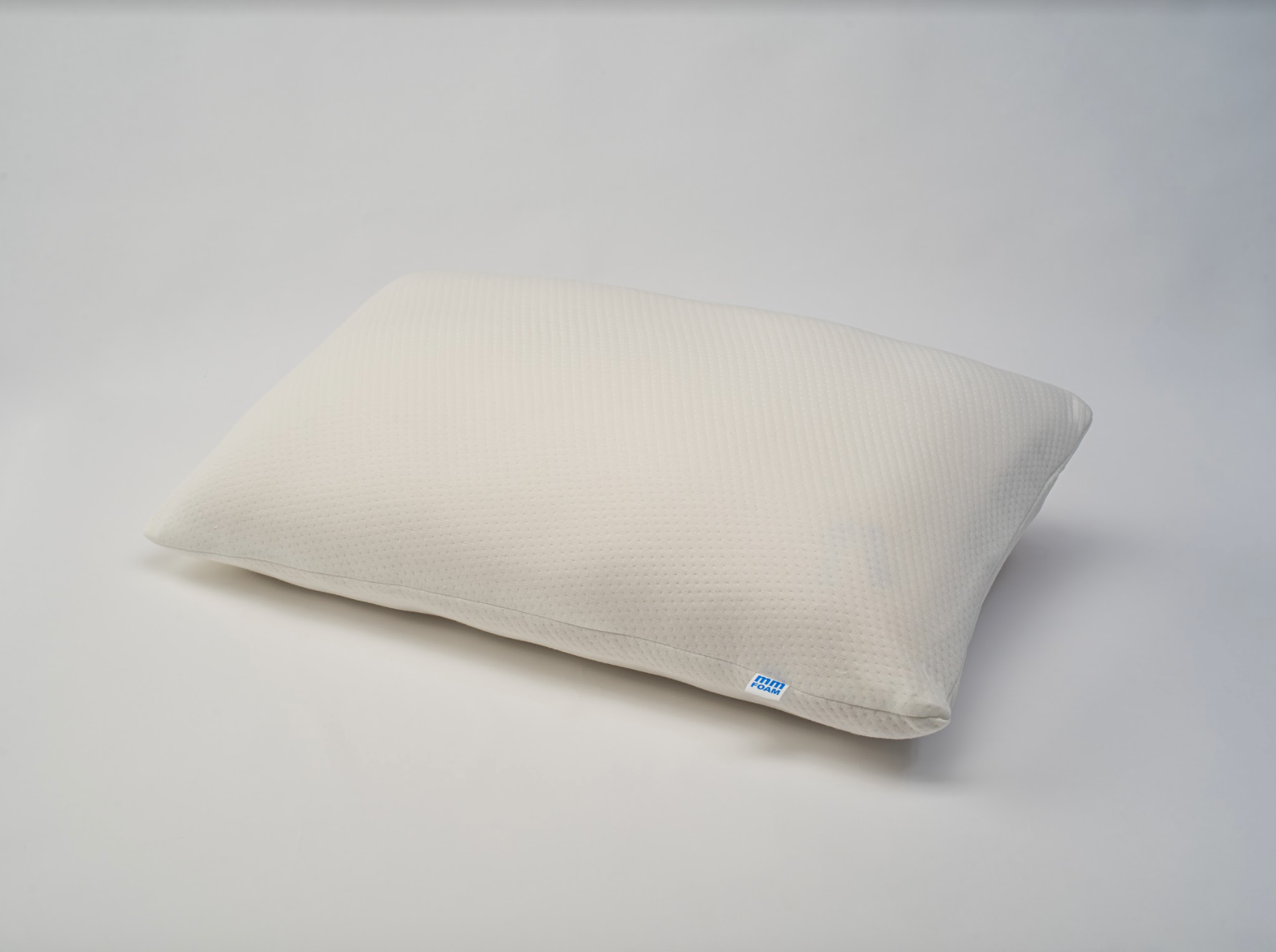Your cart is empty
Looks like you haven't added anything to your cart yet

A Comprehensive Guide to Buying a Pillow
What’s the best pillow for you? Here’s how to choose
Shopping for one shouldn't be a pain in the neck! Buying a pillow today is not quite as simple as it once was. With multiple materials, fills, fabrics and even technology options, there is a wide range of choices available. This guide will help you navigate through the many pillow options, understand the differences in material and find the best fit for you.
The First Step
Before diving into what goes inside and on the outside of your pillow, you first need to determine your sleeping position or style. Why? Because neck and spinal alignment is key to a good night's sleep and for your body to feel well rested. It optimises blood circulation throughout your body and helps your body heal by supplying blood where it’s needed. If you get a lot of aches and pains when you wake up in the morning or through the night or wake up with that tingling numbing sensation and with a terrible neck ache, your pillow is definitely one of the culprits and it's time to change it up.When you practice yoga, exercise or lift weights, posture is the key to see changes in your body and well-being. It’s not about the reps and the weight, it’s all about posture! Similarly, while sleeping, your posture matters and based on your sleep style you can facilitate and optimize your sleep cycle to ensure a good night’s rest.
What is Your Sleep Position or Sleep Style?
So let’s figure out your sleep position or style first. You are a:
- Side Sleeper if you sleep on your side. You need a thick (high), a medium to a medium-firm compression pillow to keep your neck in a neutral position where your ears are parallel to your shoulders. Your neck should not be extending in either direction - drooping or inclined. If it does, you’re not sleeping on the right pillow.
- Back sleeper if you sleep on your back. You should opt for a medium to a medium-firm compression pillow with a medium thickness (height). See that your neck is aligned with your body when you lay down on the pillow and that it is not arching upward or downward. Experts also recommend an additional soft pillow be placed under the knees to optimise neck and spinal alignment, and blood circulation.
- Combination sleeper if you sleep on your sides and on your back or stomach. You will tend to juggle between these positions throughout the night. It’s tricky choosing a pillow if you fit into this category. Experts believe that a medium to medium firm compression pillow that is of a medium thickness (height) works best as it serves as the middle ground for spinal alignment when you switch sleeping on your side to your back or stomach.
- Stomach sleeper if you sleep on your stomach. You should choose a soft to a medium-soft compression pillow and it should be a thin pillow, so that your neck stays in a neutral position. Some experts recommend placing an extra very soft pillow under your lower abdomen and hips for further spinal alignment. But in most cases the thin pillow under your head should do the trick and you can relook at it once you get used to that for further alignment. However, most experts recommend changing your position if you fit into this category as sleeping on your stomach is not good for medical and health reasons as it compresses your organs and impacts your digestion among other things.

( Image Source )
What are the different types of pillows and what are they made of?
There are 5 main types of pillows.
- Memory Foam Pillows: They are available in two different styles: solid or shredded. Solid memory foam pillows are designed to give you that super supportive feel as your head sinks into the pillow, but the fill cannot move. Such pillows however, do not offer the best bounceback, which means that as you toss and turn at night, the foam takes a while to come back to its original shape and form. Shredded memory foam pillows are made of pieces of memory foam that have been shredded. They give you the supportive feel, but the fill keeps shifting around which may disturb your sleep. However, some pillows in the market allow you to increase or decrease the filling for a plusher or firmer and thicker feel. Remember, memory foam is artificially made using polyurethane and usually has toxic chemicals so it is considered as a pollutant when disposed of as it does not decompose and it releases toxic gases when burnt.
- Latex Pillows: They are more comfortable than memory foam pillows, have optimal pressure point support, and are more breathable than traditional memory foam. They are also hypoallergenic naturally and are extremely dust resistant. They are also highly durable if they are full-bodied natural latex pillows. The best part is they are fully natural and 100% biodegradable. But beware of marketing gimmicks as you have synthetic latex being positioned in the market as latex. Latex blended pillows are also available in the market which are filled with artificial or natural materials such as polyfibre and polyester or feather etc.
- Polyfibre Pillows: These are synthetic fillers made of polyurethane. They are usually soft and fluffy and try to mimic feather pillows. You may have come across microfibre pillows which is an example of a polyfibre pillow. They tend to feel “heaty” and get lumpy after a while and require frequent fluffing. The plus is that such pillows are washable. However, they are harmful to the environment as they are made up of toxic chemicals and are not biodegradable which impacts the earth when they get dumped into landfills or they release toxic gases into the atmosphere when burnt.
- Feather Pillows: They are similar to other types in terms of comfort and breathability but over time they flatten and require frequent fluffing and re-molding. If you are looking for a really soft and plush feel, feather pillows are your answer but they can be expensive. They are natural, however, the process of plucking the feathers in some cases is inhumane and the animal can die in the process.
- Cotton Pillows: Like the name suggests, these are pillows filled with cotton. Like Feather pillows, they flatten over time and require frequent fluffing and re-molding.
Remember, all synthetic pillows have poor insulation and are usually heaty, so they are treated with an additional layer of chemicals to give you that cool feel which is innate to a natural material.
Pillows and Fabric
In the world of pillows, there are many choices for fabrics. The fabric makes up the cover of the pillow. Some are removable and some are not so that the material within them does not get compromised as most require a mold to hold its shape. In general, look for pillows that have a high GSM (Grams per square meter - thread count) are ideally made of natural materials. The higher the GSM the richer and denser the fabric. There are blended fabrics that allow certain covers to be washable or sweat and drool resistant. Some fabrics have a cooling material weaved into the fabric.
Maintenance
When it comes to maintenance and care of pillows, some pillows are washable, some have covers that are washable, and some cannot be washed at all but have to be aired. Most pillows need to be fluffed or dusted. Dusting frequently is a good practice as pillows tend to gather a lot of dust mites. Some cannot be placed in direct sunlight and require a fan to dry up if any sort of spillage occurs. Be careful of spillage as some pillow materials get damaged due to spillage and you might end up losing your warranty because of it.
Look for pillows that have a warranty and remember, the longer the warranty the better the product!
How Do I Pick The Perfect Pillow?
The right pillow should keep your head, neck, and spine, all in neutral alignment, and support the natural curvature of your spine. Keeping a neutral spine not only reduces neck pain, it also relieves pressure throughout your entire body. Each sleeping position requires a different pillow thickness (height) in order to maintain the right sleep posture.
In terms of compression or firmness of the pillow, in general, a medium to medium-firm compression is ideal for all sleep positions because this range of firmness provides the ideal support to your head and neck. Only if you are a stomach sleeper, you will need to go for a soft to medium-soft compression pillow. In any case, most sleep wellness experts discourage stomach sleeping so if you are one of them, it’s time to change your sleep style!
Final Thoughts
Your sleeping position is just one reflection of your sleep habits, and there’s a lot more to consider when you’re on the chase for your perfect pillow. The best pillow that will reduce neck pain and keep you sound asleep all night long has to keep your spine aligned in a neutral position, while also being a comfy material you enjoy resting on.
There are plenty of products out there, but that can be a good thing if you know what to look for. Just remember that keeping a healthy sleeping posture is the most important thing, and once you’ve done that, you can explore all the other things you want your pillow to do. So, go ahead and explore our pillow collection and if you ever feel lost in the wide world of pillows, get in touch with an expert at MM Foam.
- Choosing a selection results in a full page refresh.









